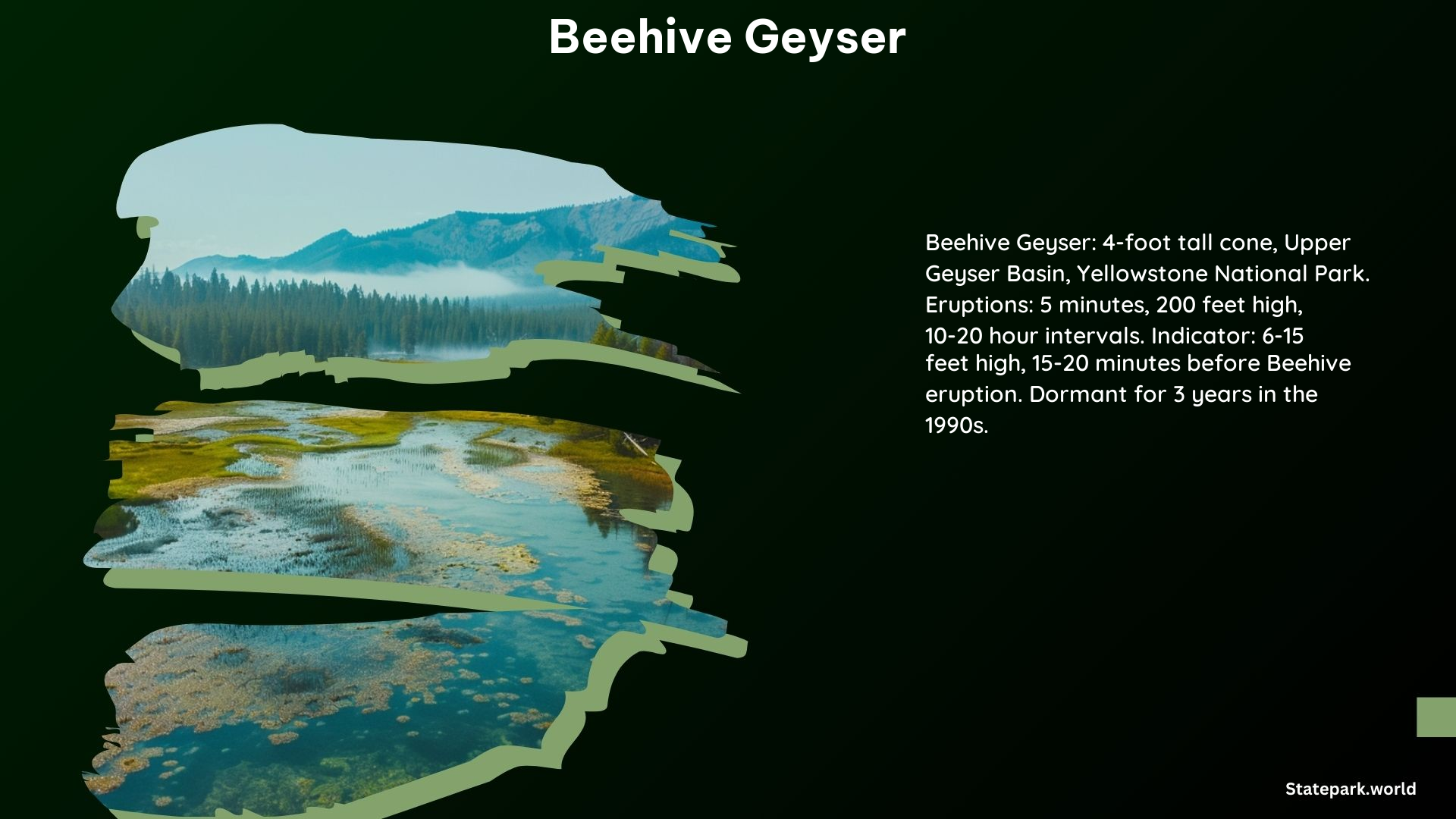Beehive Geyser is a captivating and powerful natural wonder located in the Upper Geyser Basin of Yellowstone National Park. This iconic geyser, named for its distinctive cone shape resembling a straw beehive, is a must-see attraction for visitors to the park. In this comprehensive blog post, we’ll explore the eruption frequency and duration of Beehive Geyser, as well as the best ways to predict and watch for its impressive displays.
Eruption Frequency and Duration of Beehive Geyser
Beehive Geyser is known for its relatively frequent eruptions, typically occurring once or twice a day. However, it’s important to note that the geyser can also experience long periods of dormancy, where it may not erupt for extended periods. When Beehive Geyser does erupt, the display is truly spectacular, with the water column reaching heights of 150-200 feet (45-60 meters) and the eruption lasting for 4-5 minutes.
| Eruption Frequency | Eruption Duration |
|---|---|
| Once or twice a day | 4-5 minutes |
| Can be dormant for long periods | Water column reaches 150-200 feet (45-60 meters) |
Predicting and Watching for a Beehive Geyser Eruption

Predicting the timing of a Beehive Geyser eruption can be a bit of a challenge, but there are some helpful indicators to watch for. The nearby Indicator Geyser often erupts 2-20 minutes before the main Beehive Geyser eruption, shooting water up to 6-15 feet (1.8-4.6 meters) high. However, it’s important to note that the Indicator Geyser is not a guaranteed precursor, as Beehive can erupt without the Indicator or vice versa.
The interval between Beehive Geyser eruptions can vary significantly, ranging from less than 10 hours to over a day, with occasional regular series of eruptions. Monitoring the geyser’s activity and patterns can help visitors anticipate the next eruption, but it’s always best to be patient and flexible when waiting for this natural spectacle.
Tips for Watching Beehive Geyser Eruptions
- Location: Beehive Geyser is situated on the lower boardwalk of Geyser Hill, allowing visitors to stand closer to the geyser than they can to Old Faithful.
- Safety Precautions: It’s crucial to stay on designated trails and boardwalks, as the hydrothermal water can cause severe burns. Supervise children and avoid scratching the delicate hydrothermal mats.
- Timing: Be prepared to wait patiently, as the interval between eruptions can be unpredictable. Bring snacks, water, and warm clothing to make the most of your Beehive Geyser viewing experience.
Additional Facts about Beehive Geyser
- Name Origin: The geyser’s name comes from the shape of its cone, which resembles a straw beehive.
- Temperature and pH: The water in Beehive Geyser has an average temperature of 198.5°F (92.5°C) and an average pH of 8.3.
- Hydrothermal System: The heat for the geyser comes from Yellowstone’s volcano, with molten rock or magma as close as 3-8 miles (5-13 km) underground. Rain and snow supply water that seeps down to be heated, forming a natural plumbing system.
Conclusion
Beehive Geyser is a true gem of Yellowstone National Park, captivating visitors with its powerful and frequent eruptions. By understanding the geyser’s typical eruption frequency and duration, as well as the best ways to predict and watch for its displays, you can maximize your chances of witnessing this natural wonder in all its glory. Remember to prioritize safety, be patient, and enjoy the unique experience of observing Beehive Geyser in action.
References
- https://yellowstonenaturalist.com/geyserwatch/ugb/ofgh/beehive-geyser/
- https://www.youtube.com/watch?v=XgREAoSue9M
- https://www.nps.gov/places/000/beehive-geyser.htm
- http://rcn.montana.edu/Features/Detail.aspx?id=9083
- https://en.wikipedia.org/wiki/Beehive_Geyser
